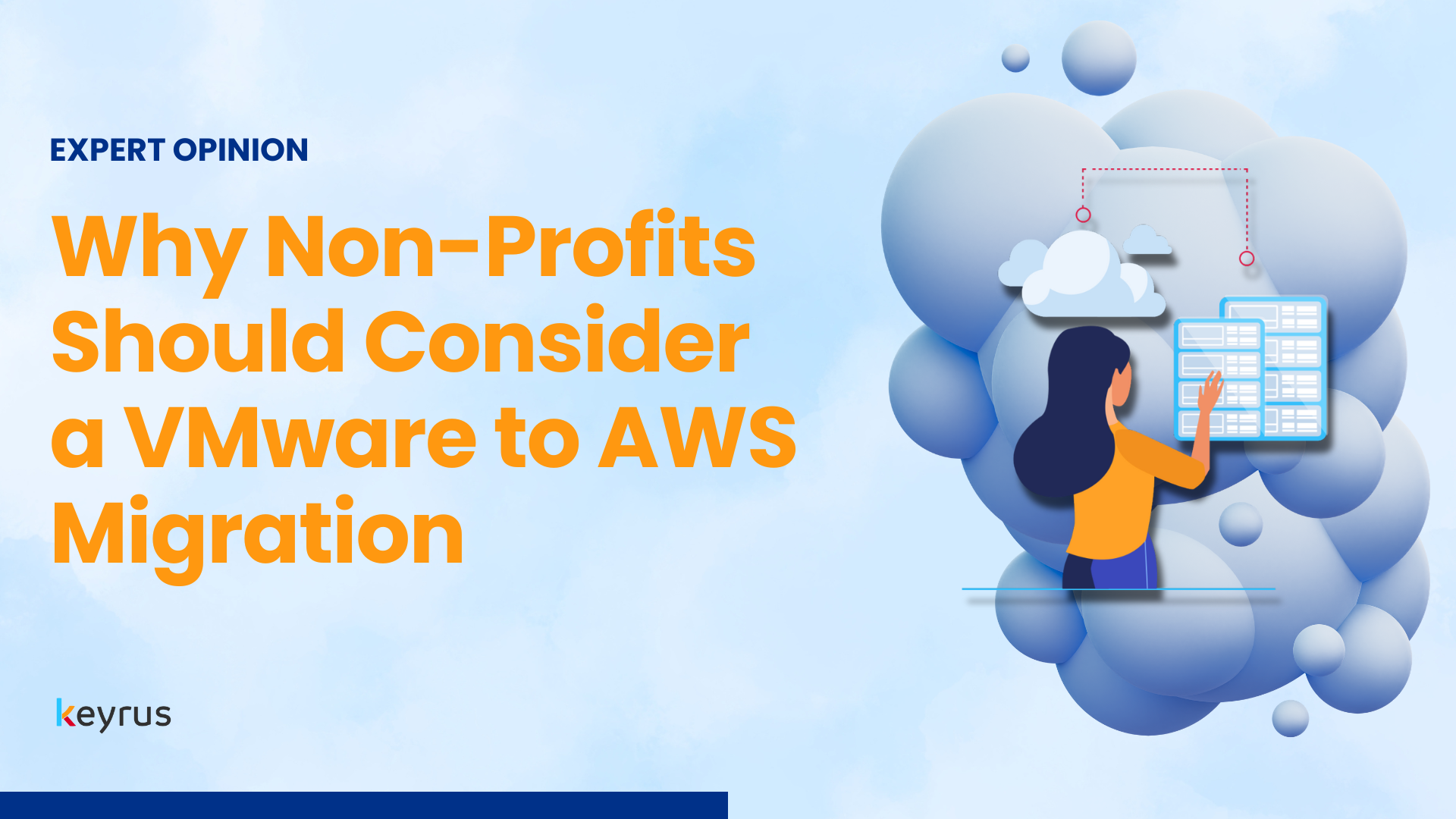Non-profit organizations face a unique set of challenges. They must be fiscally responsible, making every dollar count, while also maintaining reliable technology to support their mission. Doing more with less is becoming more and more prominent in the non-profit sector.
Because of this, recent changes to VMware's pricing and licensing model have become a significant concern. When your organization already has a tight IT budget, any kind of platform or software increase is cause for concern. In this article, we’ll go over why migrating to AWS could be a strategic move for non-profits seeking to reduce costs while modernizing their technology stack.
What is VMware?
VMware is a virtualization technology that allows organizations to run multiple "virtual machines" (VMs) on a single physical server. For years, this technology has been a cornerstone for non-profits, enabling them to maximize the use of their on-premises hardware and avoid the expense of purchasing and maintaining a new server for every application. But in 2023, VMware was acquired by Broadcom, which broad significant changes to pricing and licensing.
Why Are My VMware Costs Increasing?
In 2023, Broadcom's acquisition of VMware led to a new subscription-based licensing model and the consolidation of product lines. This resulted in a steep increase in costs for many customers. For non-profits operating on tight budgets, these changes are particularly painful. The new model often forces organizations to purchase large, bundled software packages with features they don't need. It can also come with higher core minimums, leading to you paying for far more computing power than is necessary. This shift turns a predictable, one-time capital expenditure into an unpredictable, high-cost operational expense, directly impacting a non-profit's ability to allocate funds to its mission.
What is AWS?
Amazon Web Services (AWS) is the world's leading cloud computing platform. Instead of owning and maintaining physical servers, non-profits can use AWS's pay-as-you-go model to access a vast array of services, including computing power, storage, databases, and more. This elastic model allows organizations to pay only for the resources they use, offering a flexible and cost-effective alternative to traditional on-premises infrastructure. By moving to AWS, non-profits can reduce their capital expenses and free up resources for other critical needs.
What does a VMware to AWS Migration look like for NPOs?
A VMware to AWS migration is the process of moving your on-premises VMware environment to the AWS cloud. This allows your non-profit to leverage the scale and cost-efficiency of AWS while maintaining the familiar functionality of its VMware setup.
As an Advanced Tier Services AWS partner, Keyrus is the vendor of choice to help your organization successfully migrate to the cloud. Here is how our VMware to AWS migration process is typically structured:
Assessment and Planning: A thorough assessment of your existing VMware environment is conducted to determine which workloads are best suited for the cloud. This phase focuses on creating a migration plan that minimizes disruption to your operations.
Building the Migration Plan: The next step is to create a detailed plan based on the assessment. This plan will identify the best migration strategy for your organization, such as rehosting (lift and shift) or replatforming. The Keyrus Rapid VMware Exit, for example, is designed to deliver a swift, assured migration for a range of 25-150 VMs, potentially in as little as four days, which can be critical for non-profits with limited IT staff and resources.
Rapid Migration: The actual migration is performed in different phases. The use of modern migration tools and a structured process helps ensure a smooth transition with minimal downtime. This allows your team to focus on serving your community rather than on complex technical processes.
Maximizing Your Investment: Once the migration is complete, the focus shifts to optimizing your new AWS environment. By leveraging AWS's cost management tools, your non-profit can ensure it is using resources efficiently and getting the most value from its investment. This ultimately frees up more funds to dedicate directly to your mission and the people you serve.
